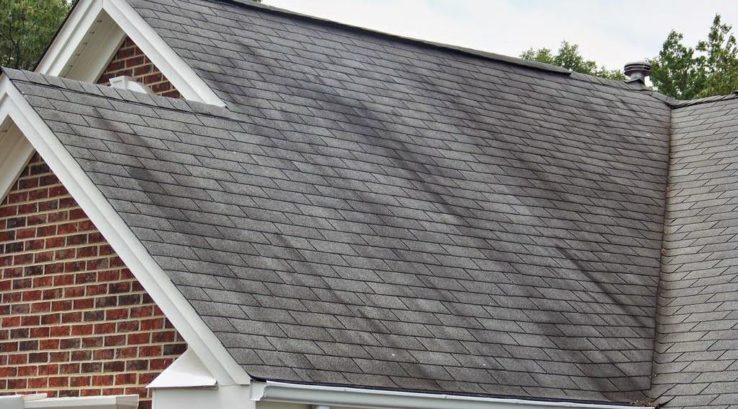Why is My Roof Turning Black?

The roof of your home is one of its primary assets. It protects your family and all your possessions and also has a starring role as one of your home’s most prominent aesthetic features. Because of these factors, your roof is a component you can’t ignore! So what do you do when you start to notice your roof is turning black? You could anxiously Google roof repair in Little Rock to see what comes up. But you might be better off consulting with local roofing professionals to find out what’s happening.
Shamrock Roofing and Construction has served residential homeowners throughout the Midwest for over 49 years. Here’s our take on what you need to know when black spots start appearing on your roof.
The Causes of a Black Roof
Identifying the root cause of a sudden discoloration can be overwhelming and exhausting. It’s tempting to assign a black roof to common culprits like soot or mold, but
a particular strain of algae (more scientifically known as gloeocapsa magma) is to blame!
This ubiquitous organism thrives in moist, wet environments, and summertime in Little Rock, with its notorious increase in humidity and frequent summer storms, brings the conditions into play that accuse this organism to thrive. It typically aims for shady areas with limited access to sunshine (north-facing angles or roof portions with heavy surrounding foliage). In this context, algae can rapidly multiply and conquer. Worst of all, the spores of the algae spread by air, so once one home in the neighborhood falls victim, it’s likely that others will experience the same problem. You won’t win the neighborhood popularity contest if that happens!
Does It Damage the Roof?
Experts on roofing in Little Rock, AR, may say algae is simply an aesthetic bummer that has no long-term repercussions for your roof’s health. However, we know that moisture can cause bigger problems (like wood rot or a leak) if allowed to fester. It can also impact the health of you and your family as it creates more opportunities for the development of mold and mildew. That’s why it’s important to take care of the problem rather than wait and see if it goes away on its own.
What Needs to Be Done?
There are several market solutions that specialists on roofing in Little Rock, AR, recommend. A simple homemade concoction of trisodium phosphate, bleach, and water breaks down algae and provides a gentle cleanse. Apply the solution to any impacted areas, let it sit for approximately 15 minutes, and then rinse with clean water. It may be tempting to use a power washer to speed up the process, but don’t. Professional roofers adamantly advise against using power washing because it often does more harm to your shingles than good.
If this option doesn’t do the trick, you can also invest in metal strips to apply to the ridges of your roof. Metal has properties that repel algae and hinder its growth. Your roofer can point you in the right direction if you think this might be a feasible option for you.
Your Best Bet is a Free Roof Inspection from Shamrock!
Whether your roof has been hit by algae or you’re hoping to avoid this conundrum altogether, a roof inspection in Little Rock is the way to go. Shamrock Roofing’s experienced team offers a thorough (and FREE) assessment of your roof and provides a list of roof care recommendations afterward. With over four decades of roofing experience, our team at Shamrock Roofing and Construction is your go-to in the Little Rock community. Contact us today to learn more about our offerings or to get registered for your free roof inspection. We look forward to working with you!